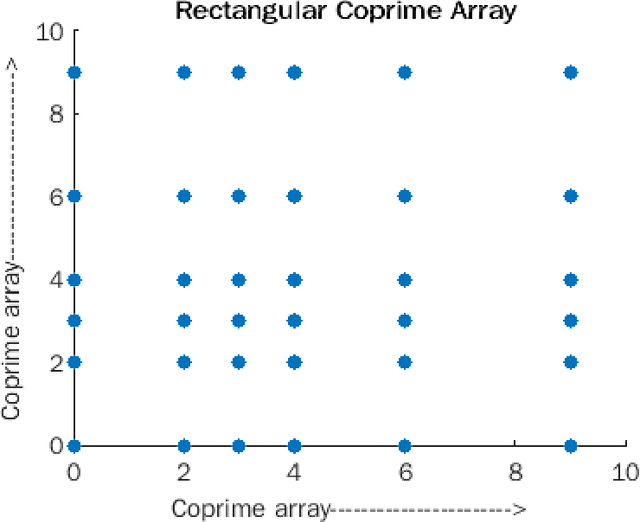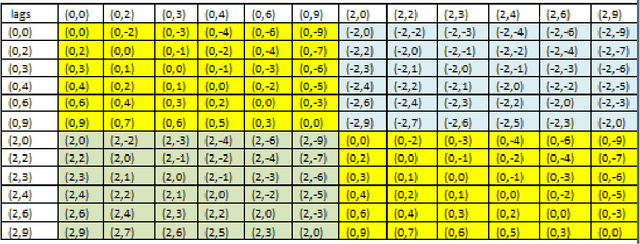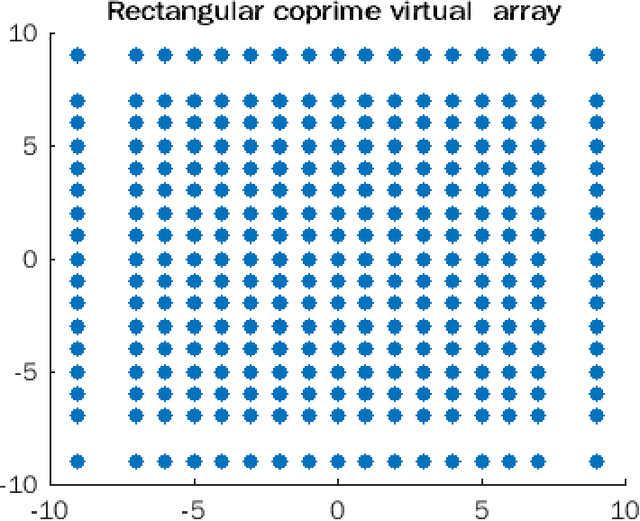Kretika Goel
A Highly Robust Sparse Fractal Array
Dec 01, 2022



Abstract:The term fractal refers to the fractional dimensions that have recursive nature and exhibit better array factor properties. In this article, we present a new class of sparse array where the recursive nature of a fractal can be used in designing an antenna array called a sparse fractal array by combining sparsity properties of the various sparse array and the recursive nature of fractal array. The most important property of the proposed array is the hole-free difference coarray which makes it a good choice for DOA estimation as various algorithms like coarray MUSIC etc demand hole-free difference coarray. But the performance of any array depends on the presence of essential and nonessential sensors in it which governs whether the difference coarray will get affected upon sensor failure or not. Hence, in this paper, a rigorous analysis is done for various combinations of sparse fractal arrays to test their robustness in presence of a faulty sensor environment.
A High Resolution Optimum 2D Coprime Planar Array
Jun 08, 2022



Abstract:Designing a new class of rectangular two-dimensional sparse array to enhance the signal resolving capabilities with a limited number of sensors has always been a challenge. We explore the non-uniformity of the sparse arrays to enhance the Degrees of Freedom (DOF) by considering the under-determined cases using the concept of the virtual array. In this paper, we propose a two-dimensional novel sparse array configurations to estimate both azimuth and elevation angle of arrival of the signal. We propose a new class of rectangular two-dimensional arrays with sensors on a plane, whose difference co-array can give rise to a virtual two-dimensional planar array with a much larger number of elements, leading to an increase in the fully augmentable range of the array. The difference co-array of the proposed rectangular array gives a contiguous dense structure which leads to a reduction in holes within the planar array as compared to the traditional methods of CPA geometry in which there are many holes present in the outer dimension of the array structure as well as within the array as well. Moreover, we know that the angular resolution of an array is highly dependent on its beamwidth which itself is inversely proportional to array size or effective array aperture. Hence by increasing the array dimension a higher resolution can be achieved. The proposed arrays provide a higher DOF for the given number of physical sensors. Optimization is performed on the proposed geometry to maximize the directivity in the array steering look-up direction by suppressing the sidelobe levels to a greater extent.
 Add to Chrome
Add to Chrome Add to Firefox
Add to Firefox Add to Edge
Add to Edge